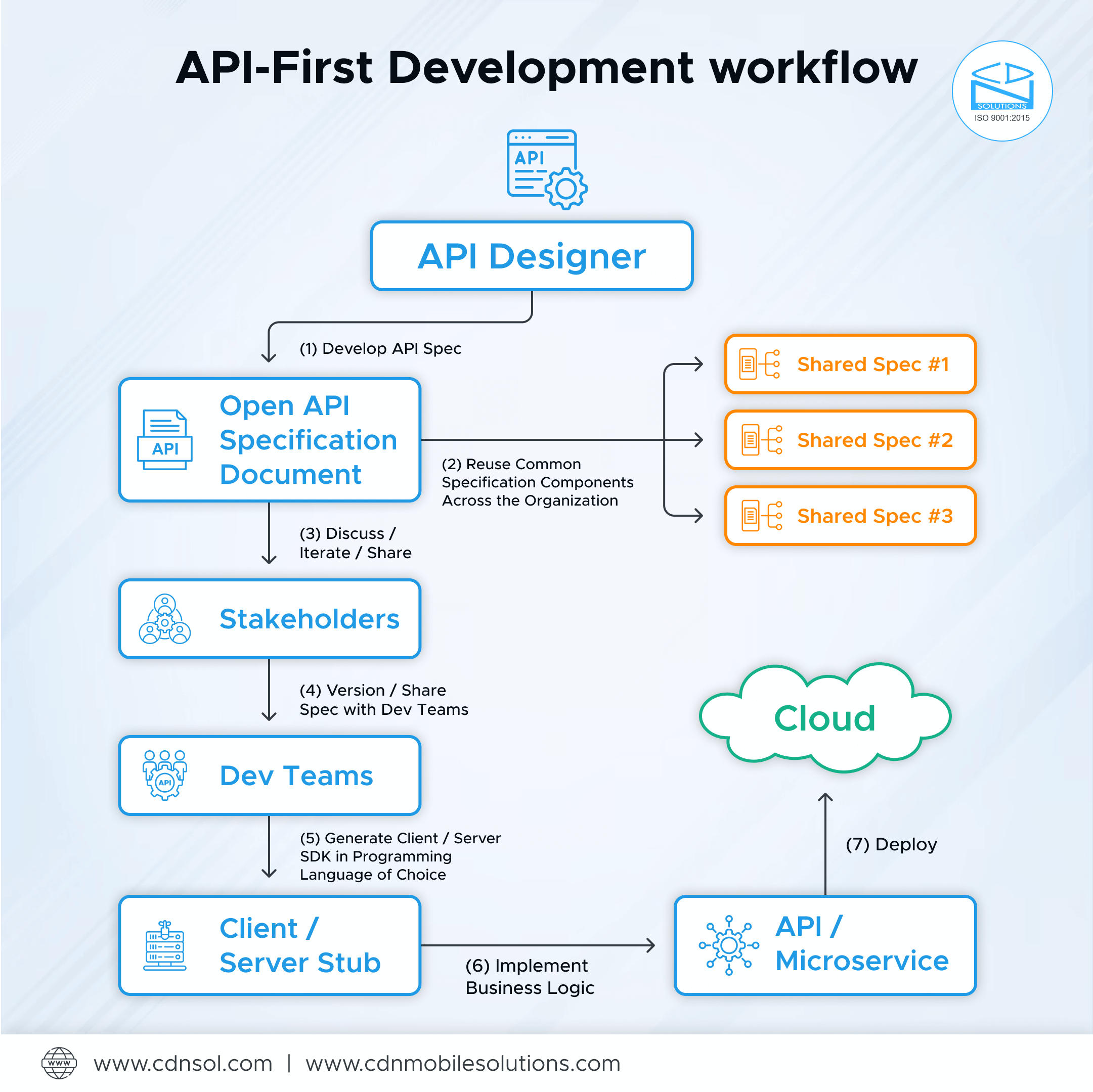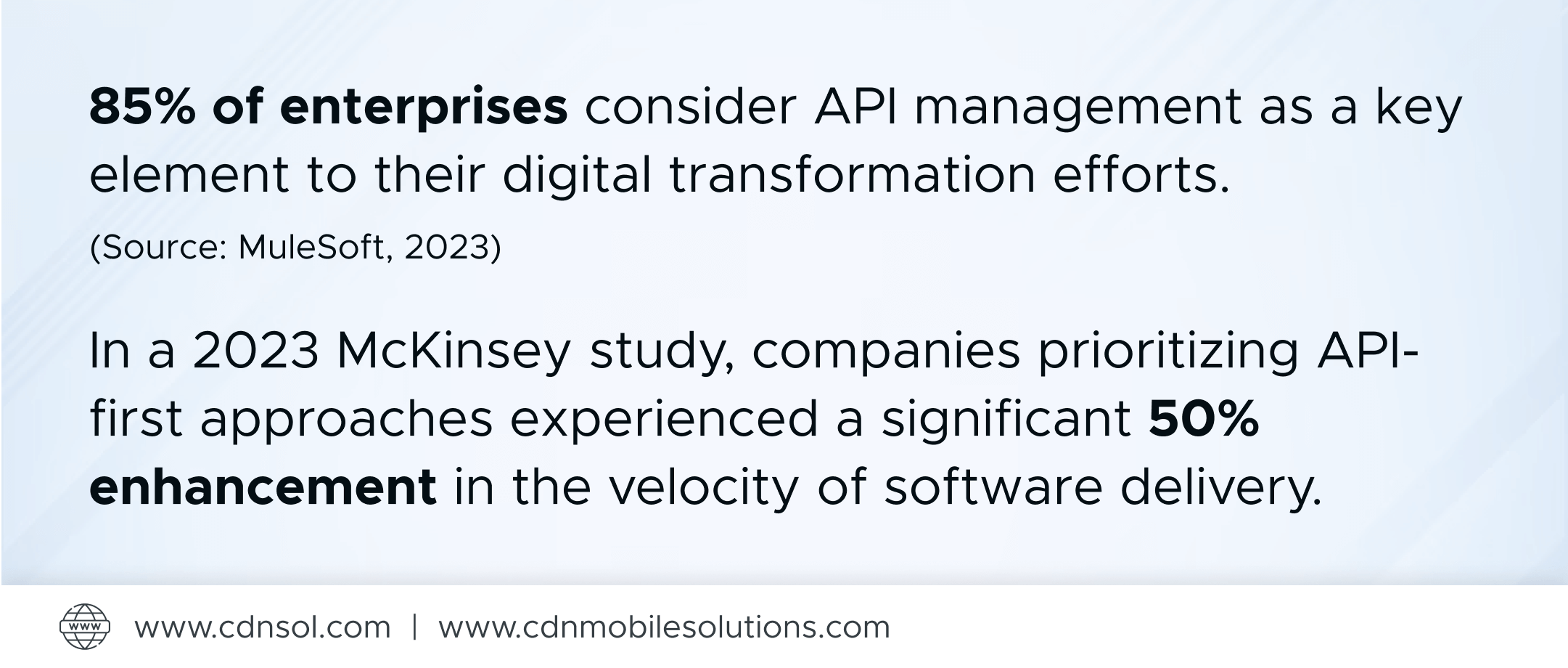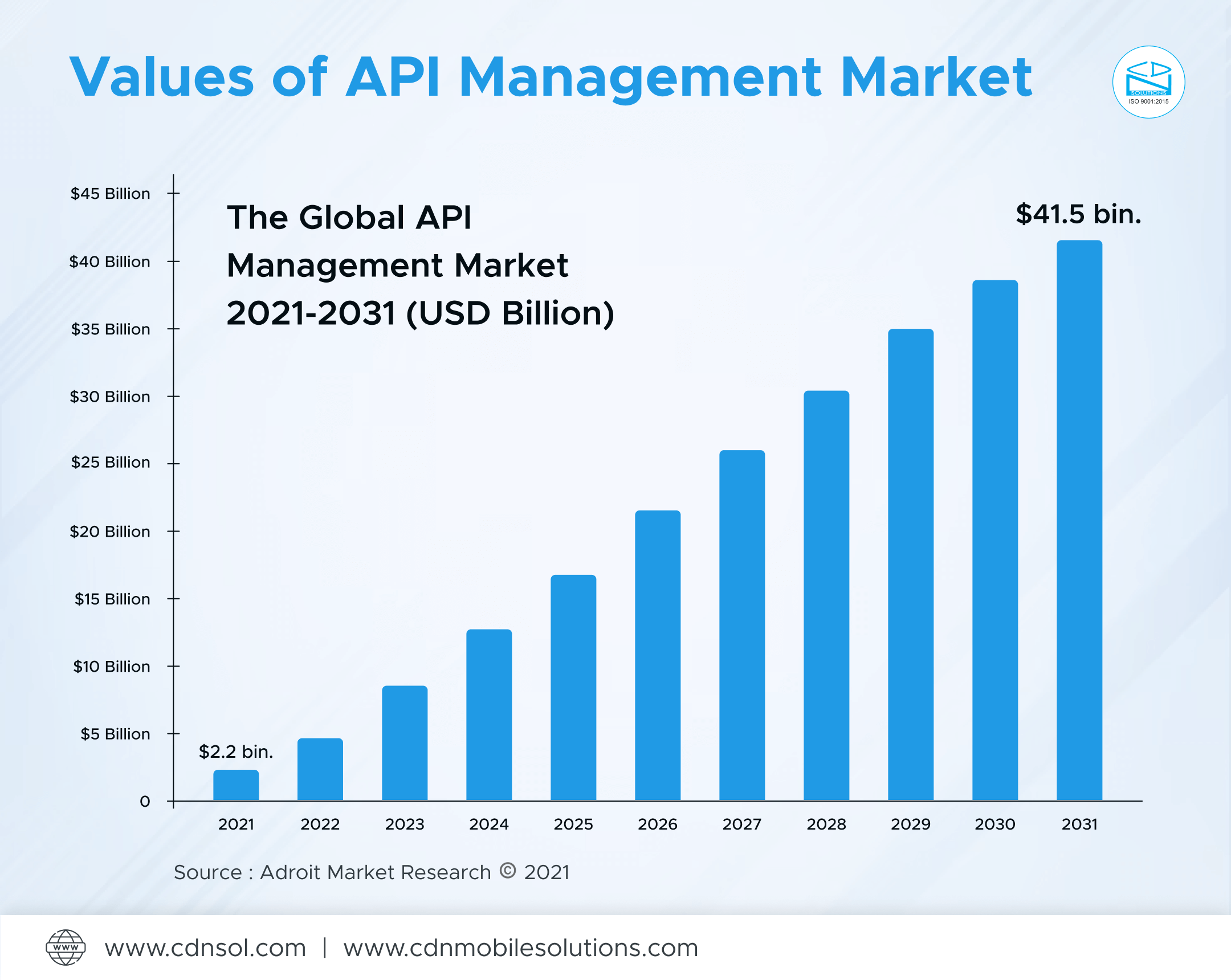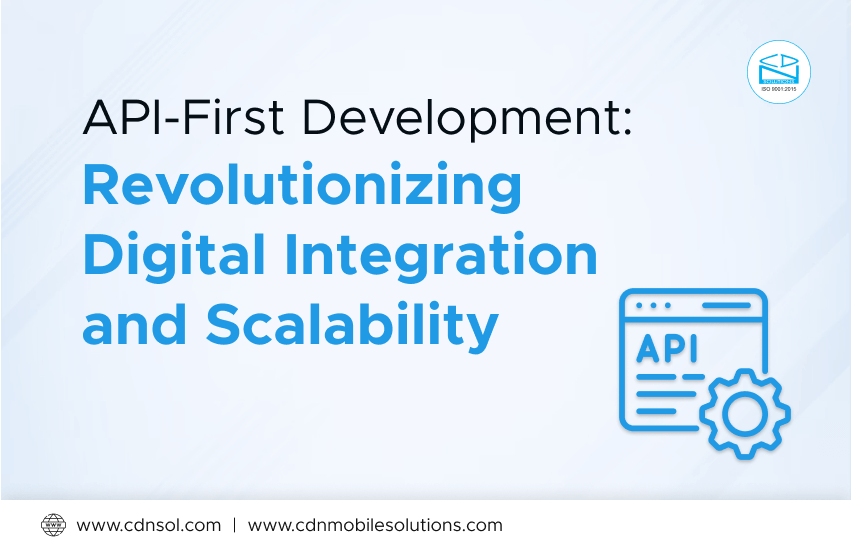API-First is a buzzword and a central strategy for companies looking to be at the forefront of the digital race. API-first development gains prominence in a fast-paced software development landscape, where speed and adaptability drive value. This is further changing how companies grow and scale their digital ecosystems.
API-First Development is an application creation practice in which the design and development of Application Programming Interfaces (APIs) come before all other software considerations. The API, unlike in traditional ways of doing things where APIs are treated more or less as afterthoughts, stands at the very core of the application.

Table of Contents
How API-First Driven Development is Different
API is a byproduct of core applications in traditional development. That mostly results in inconsistency, bad documentation, and low scalability, in most cases. API-First inverts this approach, pushing the API to the central product, mandating all features and functionalities to be accessible through well-defined APIs that are consequently inhaled by multiple heterogeneous clients – Web, Mobile, and third-party applications – in a more standardized approach. This makes development even faster and results in the creation of more flexible and modular software.
All this gives a superior level of consistency and order to the process of developing APIs about scalability, reusability, and agility. Benefits of API First Development:
- Scalability: Services created can scale when businesses require so. This also helps in developing APIs that are application-independent. They can tune in for different projects to gain noise, which helps in reducing the occurrence of repetitive development.
- Reusability: API-First approach enables developers to reuse components across applications. Eliminating the need for creating new APIs saves time and resources. According to Forrester’s 2022 report, the adoption of reusable APIs can accelerate development time by up to 30%.
- Agility: APIs serve as the framework for concurrent application development by multiple teams. There is a high speed of time to market. According to a 2023 survey by Postman, 67% of companies experienced increased time-to-market speed while using API-First.
Role of API-First
In the modern digital transformation, APIs serve as the backbone of microservices architecture. Microservices architecture enters software development by breaking down the applications further into smaller autonomous services. API-First is undertaking a substantial job in the course of this architecture because it enforces communication between such microservices. Each microservice exposes an API, ensuring that the system is kept modular and scalable. This approach not only makes development more straightforward but also increases the general reliability of the application.
Furthermore, an API-First manner of development also helps accelerate the transformation and speed delivery of new digital experiences. These could be integrations with third-party services or the development of new digital products, but in both cases, API-First helps the customer move at market changes.

Within the technology ecosystem, Spotify, Salesforce, and Twilio all jumped at the chance for this innovative API-first way. Spotify used this technique to spread music streaming across devices and platforms while keeping the user experience smooth during this period of rapid scaling. Salesforce’s pivot to an API-first approach made seamless third-party application integration, really driving in that it was here to stay as the go-to customer relationship management platform. One of the primary reasons Twilio succeeded in the communication space is almost solely down to its API-first approach, letting developers integrate voice, messaging, and video seamlessly into applications. These examples show how the API-first strategy has transformed the tech space by driving innovation, enhancing agility, and creating collaboration.
API Development Best Practices
Designing APIs with User Experience in Mind
A good API is easy to use and meets the requirements of its consumers. Designing with UX means understanding the needs of developers who will interact with the API, communicating clearly with self-descriptive endpoints, and having flexibility in handling future needs. This focus on UX results in better adoption rates and better results from integration.
API Documentation and Collaboration Tools
Any API without clear and detailed documentation is doomed to failure. It is a one-stop shop for a developer to learn how to use the API effectively. This may also mean investing in collaboration tools like Swagger or Postman to further enhance the development process by easing teamwork and sharing of insights. Well-documented APIs increase developer productivity by 23% (ProgrammableWeb, 2022).
Testing and Maintaining APIs for Long-term Success
Continuous testing and maintenance ensure the reliability and performance of the API. Moreover, automated testing frameworks catch issues much earlier in the development process, mitigating the risk of bugs and downtime. In addition, regular updates and monitoring are what ensure that the API is secure and functional in the long run. Companies using an automated API testing approach reported a decrease in bugs by 40%. SmartBear, 2022.
The Future of API-First Development
The future of API marketplaces is poised for significant growth, driven by the realization that APIs form the core of digital ecosystems. By enabling developers to effortlessly discover, purchase, and integrate APIs from diverse providers, marketplaces foster innovation and facilitate partnerships among companies. This trend is further bolstered by the increasing monetization of APIs by companies looking to create new revenue streams. The API management market, valued at $2.1 billion in 2021, is projected to reach $41.5 billion by 2031. To capitalize on this growth, 78% of companies plan to augment their investment in API-centric strategies over the next three years.

API-First development with AI and machine learning integrated is here to change the dynamics across functional industries. AI-provided APIs for intelligent services include predictive analytics, natural language processing, and image recognition, adding improved capabilities for applications. Pairing the two sets the stones for the next ecosystem in development in the API space.
In the future, the API-first movement itself will only become more sophisticated with added automation, AI-driven development tools, security, and compliance. With APIs increasingly becoming the fulcrum of digital transformation, we can only foresee further investments in API management solutions and new, evolving standards and best practices.
Conclusion
API-First development is not just about methodology but about a strategic way that supports firms to keep on innovating, scaling, developing, and adjusting in this digital age. With a renewed focus on blessing the APIs with a rich design and development experience, corporations can unlock new growth opportunities, even as they fortify their digital ecosystems and deliver better customer experiences. Looking to the future, API-First will easily be the driving paradigm to help create the next generation of digital solutions. Whether as a developer, business leader, or tech enthusiast, API-First development is key to your competitiveness in current fast-moving digital typologies.

